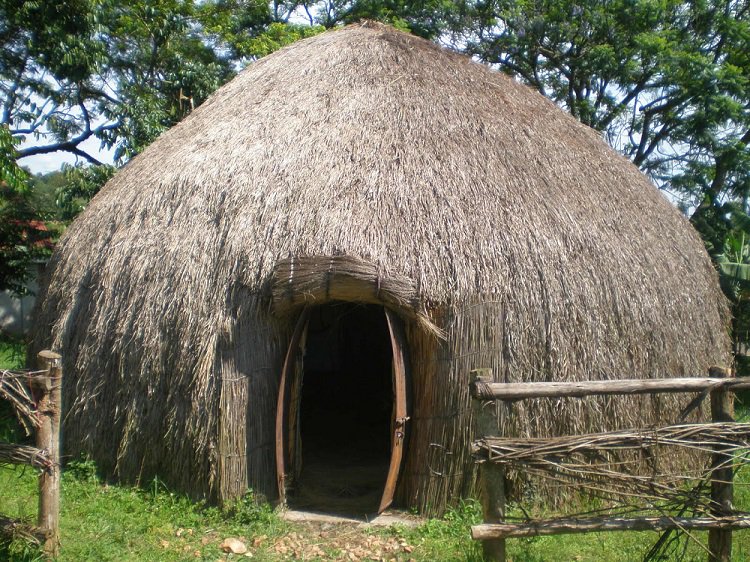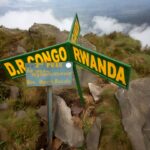Uganda is known for being a country with a lot to offer regarding tourism. Besides wildlife, cultural tourism is an important aspect not to miss out on your safari to Uganda. Ugandans are known to be the friendliest and most hospitable people worldwide with a strong cultural heritage.
Uganda has four ethnic groups and about 65 tribes like the Bantu, Nilotics, Nilo-hamitics, and Hamites. The tribes include the Baganda, Banyankole, Bafumbira, Batooro, Bagisu, Samias, Lugbara, Itesots, Langi, Madi, and Jophadhola among others.
These tribes have unique cultural practices and norms with centralized leadership in the forms of kingdoms and chiefdoms.
To get the most out of a cultural tour in Uganda, a family visit, or attend cultural performances to understand the cultures of the above indigenous groups.
On your cultural tour, these different groups will perform traditional dances and folk songs and tell stories that depict their way of life. This will relax your mind and also help you to boost your knowledge about the cultures of Ugandans.
POPULAR VISITED TRIBES DURING A CULTURAL TOUR IN UGANDA
The Batwa pygmies and Iks in the Karamojong region are the most visited cultural groups in Uganda. The Batwa pygmies dwell in the forests of Mgahinga and Bwindi. When you encounter this particular tribe, you will get the opportunity to be led into the forests as they narrate their ways of life which includes hunting practices and their tradition at large.
Another exciting tribe you will encounter on a cultural tour is the Ik tribe.
This is the smallest tribal group in Uganda and is estimated to have less than 10,000 members. This tribe dwells in northeastern Uganda, particularly in Kidepo Valley National Park. They have a unique cultural trait once their children reach the age of 3 to 4, they live in separate houses from their parents and start to live with their age mates.
The Karamojong tribe is also another most visited tribe, and these people are nomadic pastoralists who depend on their cows for milk, skin, and even blood. Through their dances, stories, and songs, they express their way of life.
There is also the Bagisu tribe with a fascinating culture you would not want to miss on your cultural tour in Uganda. This tribe is in Eastern Uganda, one of the most recognizable traits of their culture is the circumcision ritual known as “Imbalu” and their dance famously known as “Kadodi”. The circumcision ritual among the Bagishu is publically done on young men of 16 and above.
These young men are not given any painkillers during the circumcision. The purpose of this ritual is to initiate these young men into manhood. Different tasks are done during this ritual; therefore you should not miss visiting the Bagisu tribe on your cultural tour for more insight into their beautiful and unique culture.
CULTURAL SITES IN UGANDA
Uganda has a variety of cultural sites with a rich history that will help any tourist to understand the way of life the Ugandans live. Most of these cultural sites are owned by cultural individuals or institutions, while others are owned by the government, like the Uganda Museum.
Uganda Museum:
It was built to preserve Uganda’s history; a visit to this place will give you an insight into learning about the history of the country plus its cultural heritage. This is because over the years the government has collected different instruments, recordings, and artifacts that describe who Uganda was and what it is now, the instruments include traditional weapons such as arrows, bows and spears, and drums among others. The first construction of the Uganda Museum was in 1908; however, the building has undergone a series of renovations. This museum is along plot 5 Old Kira Road in Kampala.
Kasubi Tombs:
The Kasubi Tombs are another cultural tourist attraction with a rich history and interesting facts you will love. The Tombs are a heritage site and the main burial grounds for the kings of Buganda. There are four kings and other royals buried here. they are Daudi Chwa, Mutesa I, Mutesa II, and Muwanda II. The Kasubi Tombs are in Kasubi about 6 kilometers away from the city center of Kampala.
The Kabaka’s Lake:
The Kabaka’s Lake has an interesting story behind its creation. The Lake is man-made dug on the orders of Kabaka Mwanga II in 1880 covering an area of 5 acres of land to create an open escape route through Lake Victoria in case a civil war broke out in his Kingdom. However, Kabaka Mwanga II did not achieve his plans of creating a channel to Lake Victoria and that is why the lake remains isolated to date. Visitors can do some activities on this lake like sporty fishing and swimming. The Kabaka’s Lake is close to the palace in Mengo on the outskirts of Kampala.
Uganda Martyrs Shrine:
The Uganda Martyrs Shrine is a religious site and it is the most visited in Africa. Millions of pilgrims from different parts of Africa flock to the shrine every year on the 3rd of June to commemorate the Uganda martyrs who died during the reign of Kabaka Mwanga II the king of the Buganda Kingdom by then. The people who died were 25 Christians both Catholics and Anglicans who refused to give up their faith in God to follow the King’s orders.
The Uganda Martyrs Shrine is in Namugongo in Kampala.
King’s Palace and Parliament:
Another cultural site to visit is the King’s Palace in Mengo with the Parliament known as Bulange. The Palace was built in 1885. It covers an area of 4 square miles, Due to the attack that was made on this Mengo palace by the government forces during the reign of Kabaka Mutesa II, the current Kabaka no longer uses it. The Buganda’s main parliament is just opposite the palace, while visiting you might get an opportunity to watch the sessions of the Buganda elders as they discuss matters concerning the kingdom.
Bigo bya Mugenyi:
Away from Kampala city, there are other cultural sites in other regions of Uganda like Mubende district, lies an amazing place called Bigo bya Mugenyi translated to “The Fort of Stranger”. The place has a rich history which will entice you when you visit. It is said that the Bachwezi demi-gods who lived in this area hundreds of years ago left several traditional items like artifacts and earthworks that are of cultural value to the people who stay in this place. Visitors to this place are required to cleanse themselves in the nearby stream to appease the gods. Accessing this cultural site is a bit challenging because of the roads that are not well paved making them dusty in the dry season and muddy in the rainy season.
Fort Baker:
Fort Baker is another cultural site which is in the northern part of Uganda. It is located just about 29 kilometers away from Gulu City in a place called Patiko.
The fort was named after an explorer, Sir Samuel Baker who took over this place from the Arab slave traders who built it. Baker took over this place in 1872 because he was against the slave trade and his aim of taking over was to frustrate the Arab traders who were using the fort as a place to collect slaves from the region. This place has been marked as a remembrance of the slaves who were traded here; this is seen through the dark marks around the stones which are believed to be for slaves who were killed by the Arabs.
Nyero Rock Paintings:
This cultural site is located in the Eastern part of Uganda, particularly in the Kumi district. This is an interesting place and while on your visit you will view lovely paintings that were left behind by the humans who lived in this place during the Iron Age. Canoes and different animals are the symbols that are displayed in these paintings, and it is believed that these are the animals that used to roam in the area at that time.
Those are the cultural sites you will encounter on your cultural tour to the pearl of Africa, and there are many more like the Karambi Tombs which are located in Fortportal, the Nakayima tree located in Mubende district, Ndere troupe cultural center, Mparo Tombs found in Hoima district among others.
You can decide to do a 3, 6, or 7-day cultural tour in Uganda depending on your preference. You will be provided with well-trained and experienced personnel to take you through this amazing tour that will surely leave you with beautiful and unforgettable memories.




